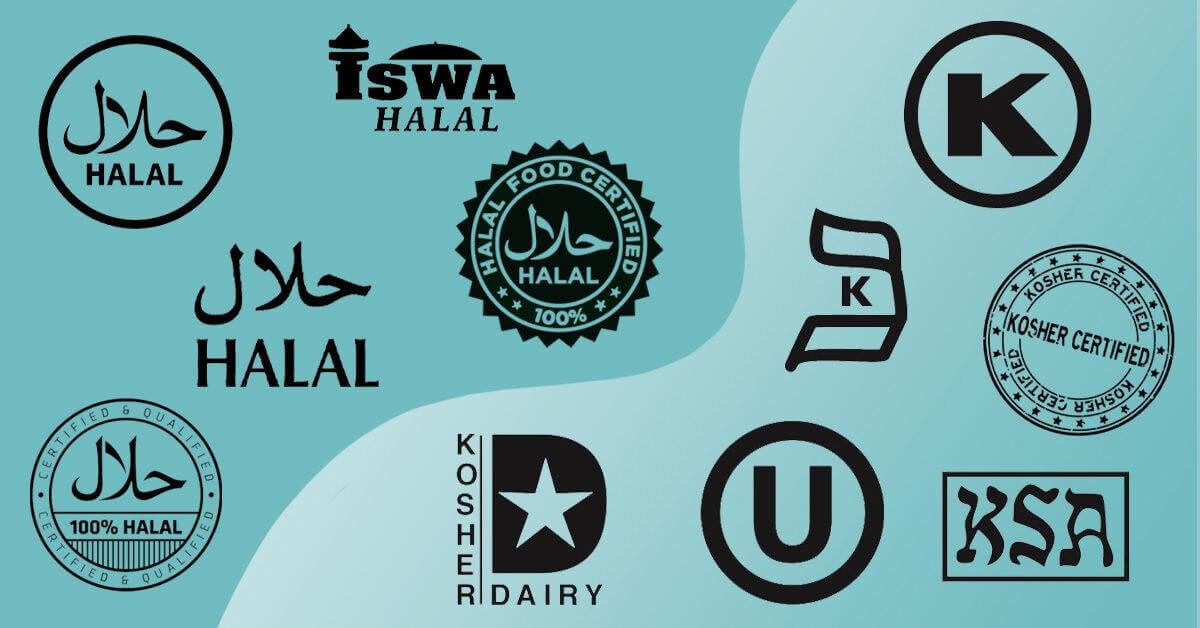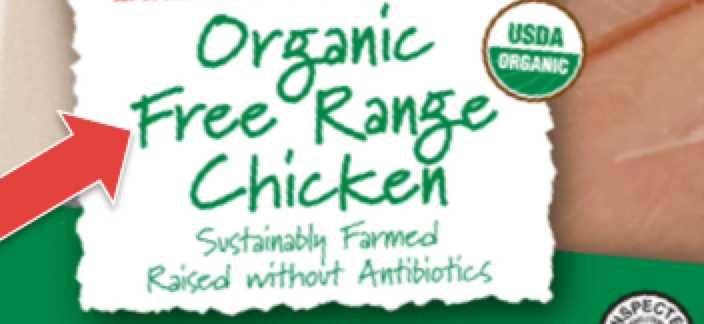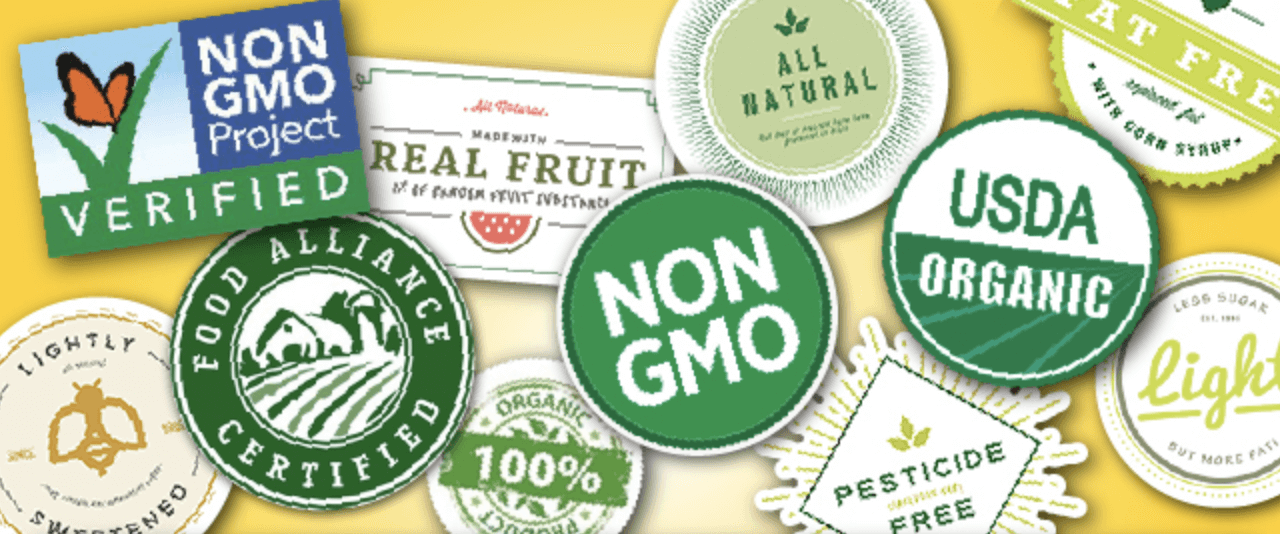Labels based on ‘product’ versus ‘process’
In the United States (US) and many other countries, pre-dating the introduction of GM foods in the 1990s, the underlying rationale for mandatory food labeling has been to protect consumers: to help them stay healthy (e.g., by providing nutritional information); to keep them safe and aware of the presence of possible ingredients that might cause harmful reactions; and to help prevent fraud. Consequently, labeling regulations have focused on the final product and its contents, not on how it was produced or processed.
In cases in which the focus was on how the product was produced, process or production-related issues, labels were voluntary in nature. Producers have long labeled a product according to a particular production feature or practice to appeal to a particular segment of consumers that value a specific attribute. For example, labels reflecting religious-based dietary laws, like Kosher or Halal restrictions have been in use for decades.

The organic industry has long relied on this voluntary labeling system, as have proponents of products promoted as, for example, free-range eggs or chickens.

GM foods are treated differently
Foods with GM content or origin have been regulated differently, subject to mandatory labeling in many countries based on the premise of protecting consumers because of the contents of the final product.
In the European Union (EU), the current mandatory GM content and origin labeling requirements were introduced more than 20 years ago and specifically focused on foods containing or derived from GM crops. At that time, the rationale given, as the then EU Health and Consumer Protection Commissioner David Byrne stated, “so people can make a full and informed choice”1.
In contrast, when the US GM crop technology approval system was set up in the late 1980s the relevant regulatory authority, the Food and Drug Administration (FDA) concluded that mandatory labeling of GM foods was not necessary because GM foods present no unique or higher risks than foods derived from conventionally bred crops. In other words, the FDA’s approach to GM labeling stayed consistent with the long-standing principle that required mandatory labeling of foods only if a warning was necessary to protect consumers; it also embodied the global standard then in place to require mandatory labeling based on the product, rather than the process.
However, in 2016, in response to criticism from groups opposed to crop biotechnology, the US amended its stance, by introducing national, mandatory GM food (referred to as bio-engineered foods) labeling requirements that took effect at the beginning of 2022.
The rationale cited for this recent change of stance according to the US Department of Agriculture, was to “increase transparency….and ensure clear information for consumers about the ingredients in their food” 2, even though the new requirement undermined both the logic and consistency of long- standing consumer protection focused on a product-based food labeling system.
Impact of mandatory GM labeling rules
Not only is mandatory GM food labeling inconsistent with the long-standing consumer protection principles of food labeling, it has failed to meet the stated, primary objective of the legislation in both the EU and the US: ‘to facilitate more informed consumer choice’. In addition, there have been negative consequences: higher costs of supply and hence higher prices for consumers than would otherwise have occurred if no labeling requirement existed. These can be attributed to the ways in which the supply chain has responded to the regulatory labeling requirements. The outcomes in both the EU and the US have been similar but arose from two different market perspectives:
European Union
Labeling requirements going back more than 20 years were introduced from a baseline in which almost all food products did not contain or were not derived from GM crops. The food industry started from a position of GM avoidance (to avoid even trace amounts of GMOs) in the belief that most European consumers would wish to avoid GM ingredients and GM derived foods altogether. As a result, very few foods with GM content or origin were marketed in the EU. And there was next to no positive labeling for GM content in foods. The result was a sizable jump in costs to accommodate the significant expenses entailed in instituting a GMO avoidance policies and practices such as the inherent higher cost of production of non-GM crops relative to GM crops, re-formulation of products, change of ingredients and segregation of different raw materials through the supply chain 3, 4,5,6 hidden in the higher price of products that used only non-GM ingredients. EU consumers were (and remain) largely unaware that cheaper (and equally safe) alternatives could be made available if the supply chain chose to use them.
It is important to note that consumer research and monitoring of buying behavior on this topic consistently show that the vast majority of consumers have been, and are, largely indifferent to whether the ingredients in the foods they eat, contain or are derived from GMOs7,8. In the UK, where the Food Standards Agency conducted research into consumer attitudes towards a range of food-related issues, concern about GMOs has been consistently low, at 5-7 per cent (unprompted) over the past 10 years7. Therefore, the costs of GM avoidance have been, and today remain imposed, on this, large majority segment of consumers even though, if given the active choice in retail outlets to choose between GMO derived products and those without GMOs, would likely choose the less expensive GMO product.
The original legislative rationale for facilitating consumer choice has never materialized as the favored and executed outcome across the EU food supply chain to the legislation has been to provide only non-GM derived products. The primary beneficiaries of this policy have been the small segment of consumers who actively wish to avoid foods with GMO derived ingredients, companies in in the production base and supply chain of these products, and businesses involved in certification, testing and traceability.
United States
Labeling requirements are much more recent than in the EU. They were proposed in several US states but only passed by voter referendum in Vermont, which briefly had its own mandatory labeling requirement in 2016. This requirement was effectively nullified by a federal labeling law designed to preempt a potential jumble of competing state laws, which could have crippled the food industry supply chain. It was passed in July 2016 (little more than one month after the Vermont law became applicable) and implemented at the beginning of 2022.

The debate over whether to impose mandatory GMO labeling requirements in the US started from a completely different baseline than in the EU. GMO derived food ingredient use has been commonplace in the US since GM crops were first widely grown in the country in the mid-1990s. There was little public concern or even debate. As a result, when faced with mandatory GMO labeling requirements, most companies in the US food product supply chain decided to include no label or in some cases to label engineered products with a positive ‘GMO presence’ label.
As in the EU, most US consumers have been and remain largely indifferent as to whether the ingredients in the foods they eat contain or are derived from transgenic GMOs or gene edited crops. But the economic consequences of mandatory versus voluntary labeling is huge. The small minority of consumers who wish to avoid GMO ingredients were already being served by the market before legislation was enacted through voluntary labeled products11. To serve these customers, food companies adopted GM ingredient avoidance policies, developed and marketed their products as ‘non-GMO’, often embracing the nationwide ‘non-GM’ (private label) voluntary initiatives.

This voluntary approach made economic sense to products and consumers alike by keeping costs associated with labeling extremely low. I contrast, in cases in which labeling is mandatory, all additional costs with meeting this requirement (e.g., tracking, tracing and changing labels) add to production costs9,10 which in the long run are passed onto consumers in the form of higher prices.
In sum, the minority pro-labeling and anti-GMO segment of consumers in the US did not need any legislation to help them avoid GM derived foods as the market delivered for them. They have evidently been prepared to pay price premiums given the expanding nature of the voluntary non-GM label initiatives. The non-GM food supply chain incurred the higher costs of GM avoidance but passed these onto consumers of these products.
Who pays for labeling: US v EU?
The mandatory labeling rationale of facilitating better consumer choice has not materialized because most companies in the US food supply chain have decided to label most of their products as containing GMOs. In that way, they did not have to pass along to consumers in the form of higher prices the additional costs of complying with the legislation. Again, the majority consumer segment that did not actively seek the ‘new’ labeling choice/information has largely borne the additional costs although the costs are largely hidden and consumer buying behavior has not altered11. In addition, the taxpayer has incurred a cost associated with compliance monitoring and testing.
The US food market had been adequately delivering consumer choice before the introduction of the federal mandatory labelling legislation via the active marketing of non-GM products to the segment that wants to buy such products. All the legislation has done is impose compliance costs on the rest of the food supply chain, consumers of those products and the taxpayer.
While the EU and US outcomes are broadly the same, the EU’s outcome has been more costly because the higher cost GMO (ingredient) avoidance policy has been effectively imposed on all consumers. Also, those who wish to avoid GMO ingredients have obtained a free ride off the larger sector of consumers who would not otherwise actively seek such foods. In the US, the higher costs imposed on the majority of consumers who do not actively seek out non GMO ingredients, relate only to the compliance costs of labeling legislation.
What are the lessons learned? Has labeling legislation better informed consumers and delivered more product choices?
Who are labeling’s winners and losers? To the majority of consumers, labeling GM ingredients has been a ‘non issue’ for which many are incurring additional costs. The primary beneficiaries are the minority of consumers who wish to avoid products derived from GM technology as well as businesses in the production and supply chain for non-GM products who benefit from the price premiums and ancillary services like GM trace testing.
In addition, the mandatory labeling requirement for GM-derived products is inconsistent. A consistent labeling system would require reversion to a product, not process-based approach (as was applied by the US FDA until the beginning of this year) or the introduction of a comprehensive mandatory labeling requirement for all products derived from other plant breeding methods such as radiation or chemical-induced mutagenesis, or cytoplasmic male sterility, or embryo rescue that have been widely used for many years to improve crop varieties used in all forms of agriculture (including organic).
On consistency grounds a case could be made to extend compulsory labeling to broader production-related issues like with/without fertilizer, with/without irrigation, with/without fossil-fuels, etc.? The list of differentiated production methods to label on consistency grounds is long.
However, this analysis is not a call to extend mandatory production process-based labeling requirements to other ‘types/features’ of production method. It is, however, a plea to policymakers to take note of the evidence if they are considering extending mandatory labeling requirements to foods and food ingredients derived from next-generation plant breeding methods including gene editing.
The evidence is clear: compulsory GM product labeling is a case of ‘inconsistent and poor regulation leading to a poor outcome’. Voluntary labeling initiatives are better able to deliver more informed consumer choice at a lower net cost to society. Policymakers around the world should not repeat these mistakes when considering the issue of labeling for gene-edited foods.
References
- GM laws to pave way for lifting EU approvals ban. 2003. European Voice.com 9(25). Cited in Carter C and Gruere G. Mandatory labelling of GM foods: does it really provide consumer choice. Agbioforum 6 (1&2), 68-70
- Establishing the National Bioengineered Food Standard. United State Department of Agriculture, Agricultural Marketing Service, press release 0278.18
- Moses V and Brookes G (2013) The world of GM-free. GM Crops and Food, 4,3, 1-8. http:dx.doi.org/10.4161/gmc.25992
- Kalaitzandonakes N, Maltsbarger R and Barnes J (2001) Global identity preservation costs in agricultural supply chains. Canadian Journal of Agricultural Economics: 49, 605-15. http://dx.doi.org/10.1111/j.1744-7976.2001.tb00330.x
- Brookes G, Cetiner S, Gurzel A (2012) Economic impacts of the Bio-safety Law and implementing regulations in Turkey on the Turkish importing and user sectors. Report to the American Soybean Association (United Soybean Board). Publications | PG Economics
- Miller H and Brookes G (2015) What’s behind a genetically engineered label?. Nature Biotechnology, vol 13, No 5, May 2015
- Food Standards Agency (2012) GM free labelling: Exploring public responses to the labelling of GM food and the use of GM-free labelling. Project code: FS242002 View PDF (food.gov.uk)
- Sleenhoff S and Osseweijer P (2013) Consumer choice: linking consumer intentions to actual purchases of GM labelled food products. GM Crops and Food, 4 (3) 166-171. http://doi.org/10.4161/GMRC.26519
- Lesser W and Lynch S (2014) Costs of labelling GM food products in New York state. Dyson School of Applied Economics and Management, Cornell University
- Kalaitzandonakes N , Lusk J, Magnier A (2018) The price of non-genetically modified (non-GM) food, Food Policy http://doi.org/10.1016/j.foodpol.2018.02.005
- Adalja A, Liaukonyte J, Wang E and Zhu X (2022) GMO and non-GMO labeling effects: evidence from a quasi-natural experiment. Marketing Science, August 2022. http://doi.org/10.1287/mksc.2022.1375
Graham Brookes is an agricultural economist with PG Economics, UK. He has more than 35 years’ experience of analyzing the impact of technology use and policy change in agriculture and has authored many papers in peer reviewed journals on the impact of regulation, policy change and GM crop technology. www.pgeconomics.co.uk































